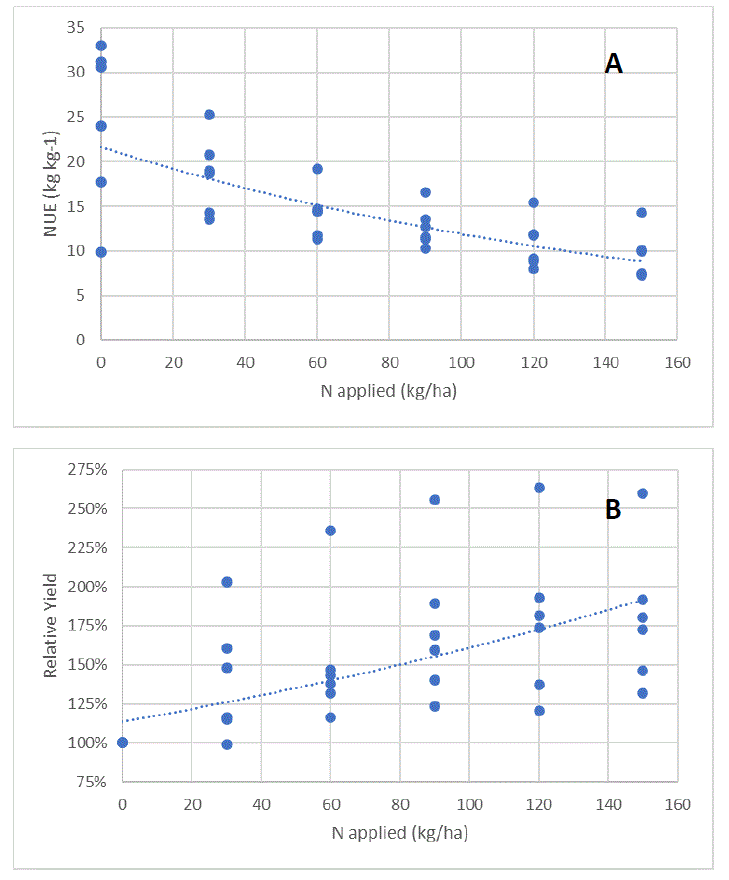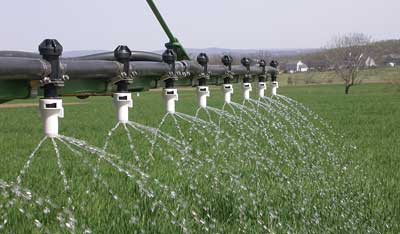Management practices can influence nitrogen, sulphur, phosphorous, and water use efficiencies (WUE) on your farm. However, there are many other factors which can also contribute to or impact these efficiencies.
Understanding nitrogen relationships

For instance, the main factors affecting nutrient and water use efficiencies in spring canola in North America: A review of literature and meta-analysis led by Michele Konschuh and Dilumi Liyanage which was performed using 730 comparisons extracted from 24 peer-reviewed publications, reported that applications of nitrogen and sulphur fertilizer across North America negatively impacted nitrogen use efficiency (NUE) and sulphur use efficiency (SUE), when compared to corresponding controls.
However, this was mainly due to the diminishing nature of productivity, with an increasing rate of applied fertilizer. Meaning that while relative yields increased with increasing nitrogen rate (between 0 and 160 kg/ha), the rate of increase diminished in the range of fertilizer rates examined (see figures). Therefore, there’s a balance between optimum NUE and nitrogen rate. See how nitrogen fertilizer is one component in the nitrogen cycle.
Management practices impacting NUE
Furthermore, all field management practices assessed for NUE resulted in a negative impact, except for nitrogen placement and timing, where the effect was positive but marginal. Timing by nitrogen rate studies produced the greatest negative impact on NUE.
The authors have suggested that a possible explanation for the lack of positive impacts on NUE may be a result of confounding effects, such canola genotypes (cultivars) with a greater response to applied nitrogen under varying environmental conditions, initial available nitrogen content available to the plant, fluctuation of soil moisture conditions during the growing season in each production region, and sufficient availability of other plant nutrients required for optimal plant growth and development, such as phosphorous and sulphur.
Water, sulphur, and phosphorous use efficiency
Other findings from this meta-analysis include:
- Sulphur use efficiency was improved when applied in the spring in combination with adequate nitrogen and with soil moisture reserves.
- Stubble height and the timing of stubble management practices had a significant positive impact on WUE, and the effects of irrigation were positive but marginal. The effect of combining row spacing with stubble height was negative, but marginal.
- Among treatments, irrigation applied during reproductive development to physiological maturity had the greatest WUE, followed by full season irrigation (seeding to harvest), whereas withholding irrigation during reproductive development resulted in the poorest WUE.
- There is a need for canola cultivars available to farmers today to be further evaluated on a regional basis for nutrient and water use efficiencies to ensure economic sustainability for this crop in North America, and controlled environment studies isolating soil moisture are required.
- An adequate concentration of phosphorous in the soil is required for maximum canola yield; however, phosphorous availability can be limiting even if soil phosphorous is adequate.
- Phosphorous uptake can be enhanced by ammonium (NH4) applications.
The full summary and final report of ‘Main factors affecting nutrient and water use efficiencies in spring canola in North America: A review of literature and meta-analysis’ research is on the Canola Research Hub.
Further phosphorous and fertility research
For more a comprehensive evaluation of phosphorous management, see Cynthia Grant and Don Flaten’s ‘4R Management of Phosphorus Fertilizer in the Northern Great Plains: A Review of the Scientific Literature’ report featured in Fertilizer Canada’s 4R Nutrient Stewardship content and in the related peer-reviewed publication.
For more fertility research, check out these completed and ongoing projects on the Canola Research Hub.
Published April 28, 2021










